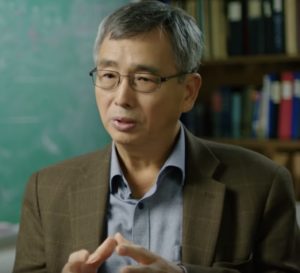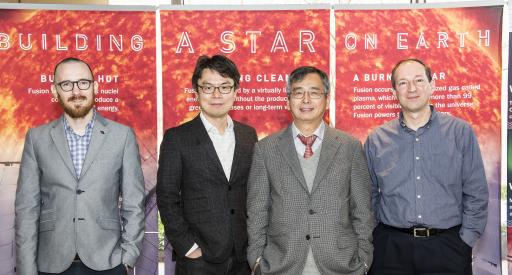 In this video, C.S. Chang from the Princeton Plasma Physics Laboratory describes how his team is using the GPU-powered Summit supercomputer to simulate and predict plasma behavior for the next fusion reactor.
In this video, C.S. Chang from the Princeton Plasma Physics Laboratory describes how his team is using the GPU-powered Summit supercomputer to simulate and predict plasma behavior for the next fusion reactor.
A team led by C.S. Chang of PPPL is committed to delivering a more powerful tool for exploring the feasibility of sustainable fusion in a tokamak fusion reactor, the donut-shaped device being built by ITER. By using Summit, Chang’s team expects its highly scalable XGC code, a first-principles code that models the reactor and its magnetically confined plasma, could be simulated 10 times faster than current supercomputers allow. Such a speedup would give researchers an opportunity to model more complicated plasma edge phenomena, such as plasma turbulence and particle interactions with the reactor wall, at finer scales, leading to insights that could help ITER plan operations more effectively.
The PPPL code, called XGC, simulates behavior of the ions, electrons and neutral atoms in the transport barrier region— or “pedestal” — between the ultra-hot core of the plasma that fuels fusion reactions and the cooler and turbulent outer edge of the plasma. The pedestal must be high and wide enough to prevent damage to the divertor plate that exhausts heat in doughnut-shaped tokamaks that house the fusion reactions.
“How to create a high edge pedestal without damaging the divertor wall is the key question to be answered,” said Chang. “That is a prerequisite for achieving steady state fusion.”

PPPL physicists working on development of XGC code for simulating the behavior of transport barrier particles. From left: Robert Hager, Seung-Ho Ku, team leader C.S. Chang, Stephane Ethier.
PPPL, on Princeton University’s Forrestal Campus in Plainsboro, N.J., is devoted to creating new knowledge about the physics of plasmas — ultra-hot, charged gases — and to developing practical solutions for the creation of fusion energy. The Laboratory is managed by the University for the U.S. Department of Energy’s Office of Science, which is the largest single supporter of basic research in the physical sciences in the United States, and is working to address some of the most pressing challenges of our time.




